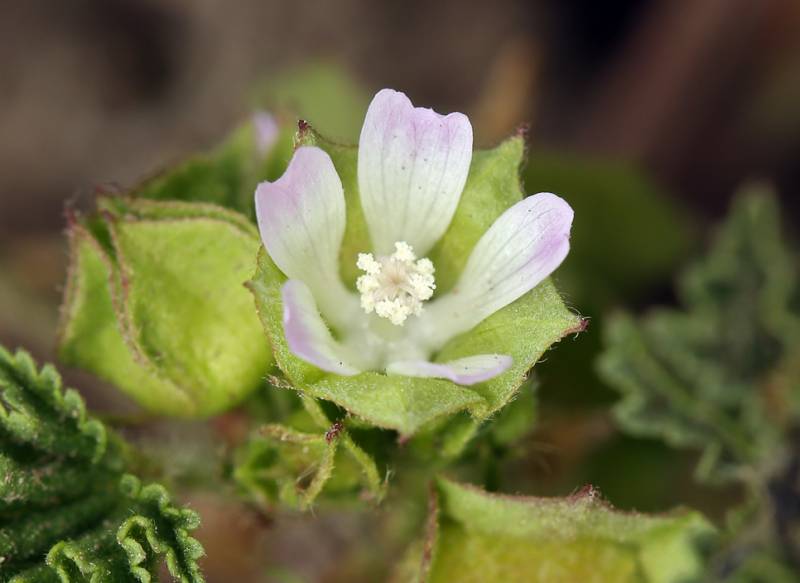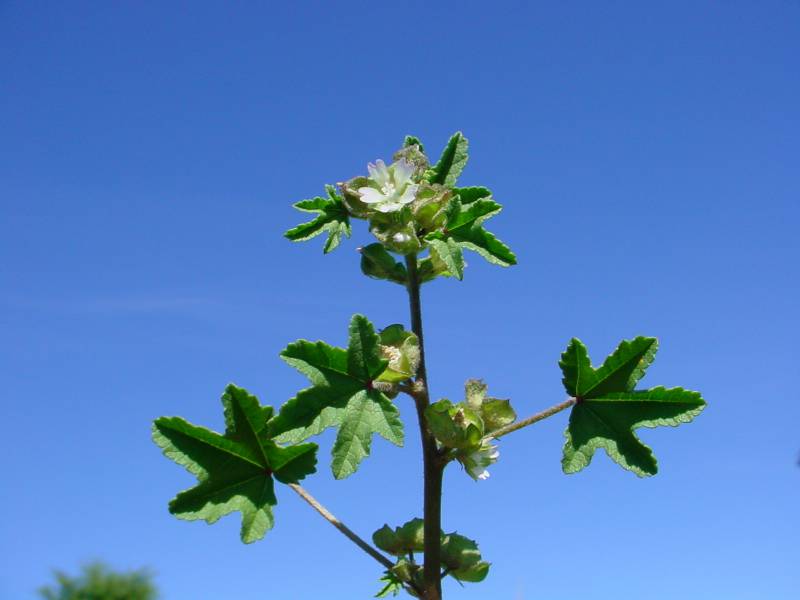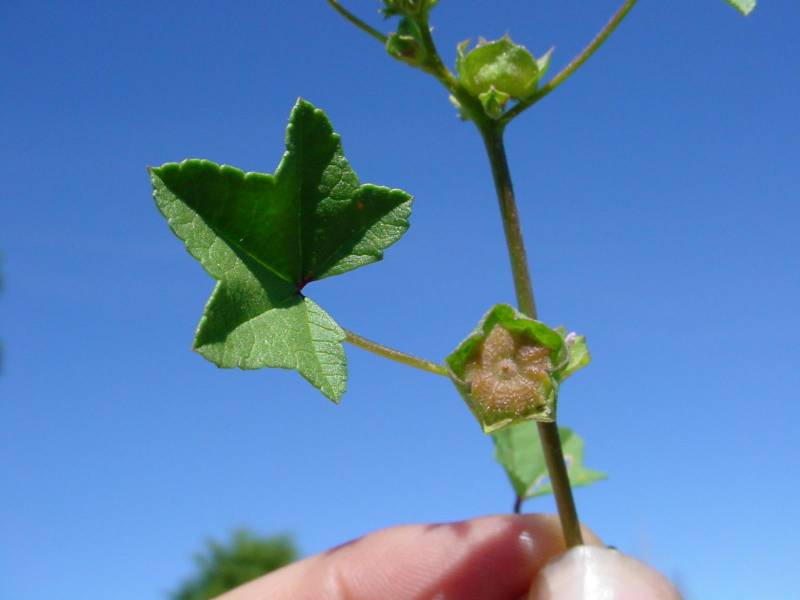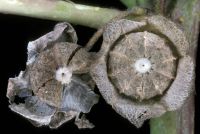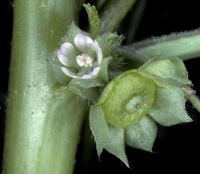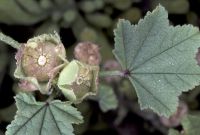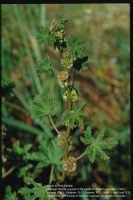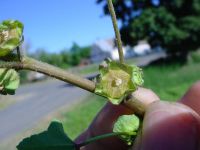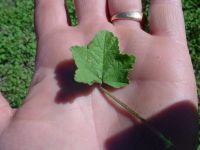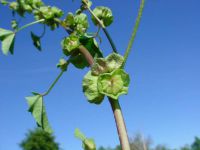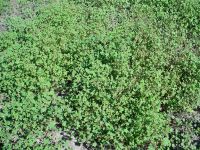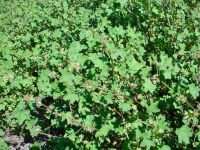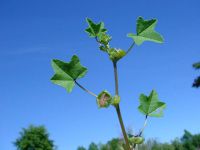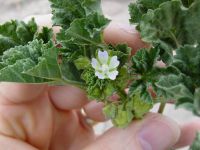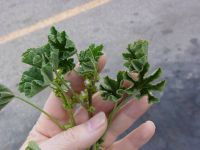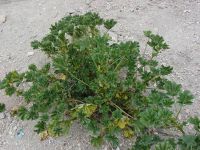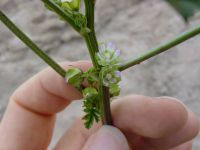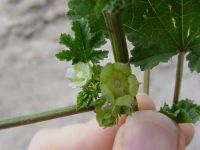Distribution: Occurring west of the Cascades crest in lowland western Washington; British Columbia to California, east to the Great Plains, also in southeastern and northeastern North America.
Habitat: Roadsides, forest edge, fields, ditches, wastelots, and other disturbed open areas.
Flowers: March-August
Origin: Introduced from Eurpoe
Growth Duration: Annual
Conservation Status: Not of concern
Pollination: Bees
Prostrate or spreading, annual or biennial herbs, the stems 2-6 dm. long, puberulent.
Leaves palmately veined, with petioles up to twice as long as the blades; leaf blades cordate-reniform, 2-5 cm. long and slightly broader, shallowly 5-7 lobed, with fine teeth.
Flowers in small clusters in the leaf axils, on long pedicels to sessile, white to pale lavender; calyx shallowly 5-lobed, about equaling the corolla; petals 5, clawed; filaments fused into a tube, the stamens freed from the tube single or in pairs; style branches stigmatic most of their length, not capitate; ovary superior, the carpels in a ring around a central axis.
Carpels flattened and strongly cross-corrugated on the back.
Publication: Demonstr. Pl. 18. 1753.
PNW Herbaria: Specimen records of Malva parviflora in the Consortium of Pacific Northwest Herbaria database
WA Flora Checklist: Malva parviflora checklist entry
OregonFlora: Malva parviflora information
E-Flora BC: Malva parviflora atlas page
CalPhotos: Malva parviflora photos

